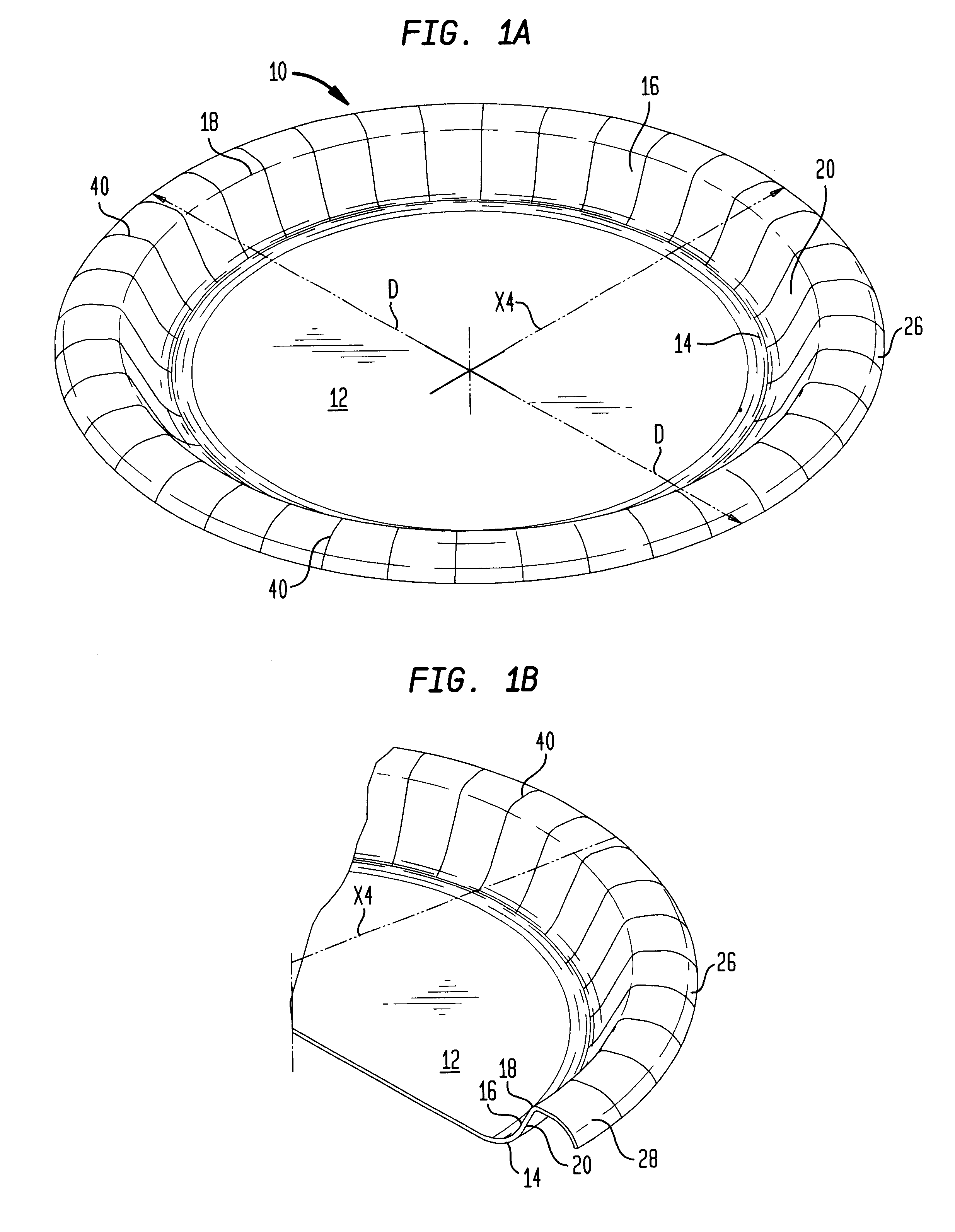Disposable food container with a linear sidewall profile and an arcuate outer flange
a technology of sidewall profile and outer flange, which is applied in the field of disposable food containers, can solve the problems of less forgiving respect for less attractive pleating control and product consistency of products made according to the '020 patent, and inability to achieve press speeds, etc., to achieve the effect of improving physical properties, reducing the basis weight and reducing the weight of products
- Summary
- Abstract
- Description
- Claims
- Application Information
AI Technical Summary
Benefits of technology
Problems solved by technology
Method used
Image
Examples
examples 9-18
Comparative Examples I-N
Using the procedures described above, 9" and 10" pressed paperboard plates having various shapes of the invention were prepared and tested for SSI rigidity and rim stiffness. The plates' stiffness and rigidity is compared, with plates of the '640 and '020 patents made from like paperboard in Tables 10 and 11. Results appear graphically in FIGS. 15 and 16.
TABLE 11
It should be appreciated from the foregoing results, particularly as seen in FIGS. 15 and 16, that the plates of the invention exhibit significantly higher rigidity, rim stiffness or both as compared with pressed paperboard plates of the same basis weight having a prior art profile.
examples 19 , 20
EXAMPLES 19, 20
Comparative Examples O,P
Nominally 9" and 10" plates having the configuration of Invention Profile 9 were thermoformed from PPO / HIPS (poly(phenylene)oxide / high impact polystyrene) and compared with like products configured in accordance with the teachings of U.S. Pat. No. 5,088,640. The various products were tested for SSI rigidity and rim stiffness. Results appear in Table 12 below.
It is seen from Table 12 that the plates of the invention exhibited both higher rigidity and much higher rim stiffness than 4 radius plates configured as in U.S. Pat. No. 5,088,640. Nominal 9" plates of the '640 patent exhibited a rim stiffness of 1280 grams, whereas a corresponding Invention Profile 9 plate exhibited a rim stiffness of 1930 grams; an increase in rim stiffness of over 50 percent.
Additional Examples / Panel Testing
In some paperboard embodiments of the present invention, for example, in connection with nominal 10" plates it is possible to produce plates in accordance with U.S. ...
PUM
 Login to View More
Login to View More Abstract
Description
Claims
Application Information
 Login to View More
Login to View More - R&D
- Intellectual Property
- Life Sciences
- Materials
- Tech Scout
- Unparalleled Data Quality
- Higher Quality Content
- 60% Fewer Hallucinations
Browse by: Latest US Patents, China's latest patents, Technical Efficacy Thesaurus, Application Domain, Technology Topic, Popular Technical Reports.
© 2025 PatSnap. All rights reserved.Legal|Privacy policy|Modern Slavery Act Transparency Statement|Sitemap|About US| Contact US: help@patsnap.com



